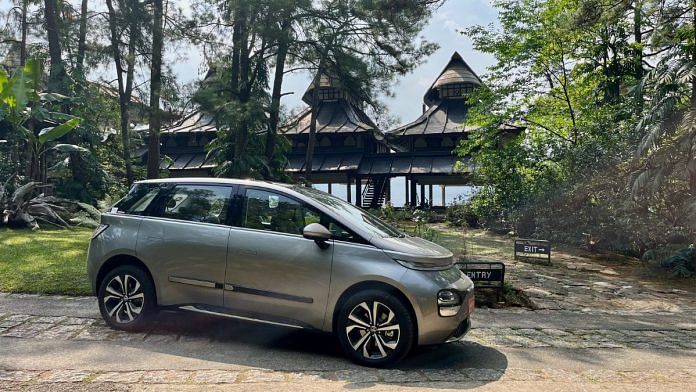A week ago, I found myself in Guwahati to drive the MG Windsor EV Pro, an updated version of India’s best-selling electric vehicle. A bigger battery, thus more range and some Advanced Driver Assistance Systems (ADAS) features. The drive up to and down from Shillong was quite memorable as a result, without the need to be in a state of panic due to range. I genuinely like the Windsor EV, as does the Indian consumer. The first 8,000 units of the car, which had an introductory price tag of Rs 17.5 lakh, sold out in a day.
But I do have one serious gripe with this car, and to be fair, it isn’t just directed at the Windsor EV. And that is the lack of physical buttons for functions. Call me old fashioned, but I like a physical button.
The MG Windsor takes the lack of buttons to another level. For example, there is no dedicated button to control the outside rear-view mirrors. You can adjust them through the steering wheel-mounted controls, but it takes some time to know how to do that. Also, the vehicle has no headlight controls on the stalk; you have to adjust that through the infotainment screen. But, to be fair, you can keep that permanently on automatic. And then the most notorious non-button function, which is for the curtain under the panoramic roof. You instead use voice commands to open and close the roof curtain or struggle through the settings menu. And you know what is most frustrating, there is a blanked out portion where such a control would be.
Each brand has its idiosyncrasies. As more brands get button starts for their vehicles, there is no consistency whatsoever in where these are located. The MG Windsor EV doesn’t even have a start button—you literally open the car, select ‘Drive’ and go. But only after wearing your seatbelt, because the MG Windsor EV does not release the electronic parking brake until you belt up.
But as I said, the lack of physical buttons isn’t unique to the Windsor EV, although that is the most extreme example. I also recently drove the new Kia Carens Clavis, which has a switchable touch panel for media and air-conditioning controls. Really cool feature, but again, I genuinely appreciate buttons for air-conditioning, which ironically the Windsor EV actually has.
Also read: My Hong Kong visit was a reality check. XPENG has taken the first step for a ‘flying car’
Makes driving easier
But why do I have this love affair with buttons? I’ll tell you why I like buttons, because I like to control aspects of the vehicle by touch without taking my eyes off the road. And as used as I am to using my Amazon Echo device or saying ‘Hey Siri’, somehow using voice commands on a car is not something I’ve become used to. Maybe it is because I change cars so often, and different car brands have wildly different voice command abilities.
That said, maybe I will change my habits. I have become used to mainly driving automatics and the increasing electronics onboard supercomputer-like cars. But even supercomputers have buttons. They feel deliberate, like you are doing an action.
So my plea to automakers is quite simple: I love technology, but I really want some buttons. It just makes driving easier.
@kushanmitra is an automotive journalist based in New Delhi. Views are personal.
(Edited by Theres Sudeep)







Cant agree more. I have a Curvv EV and every time I start the car, I have to fool with the settings men in the infotainment screen to switch off the settings of ADAS.
Which city roads in Chennai support ADAS?? With bumper to bumper traffic conditions and no lane discipline, where defensive driving is required, ADAS is not going to help. There should be a single button to on/off ADAS assistance in all cars considering the Indian driving conditions
It is great to know that the Windsor’s engine starts only after buckling up of the seat belt. Indian cars should not have horns because most drivers don’t know when to use them. Greedy car makers do anything to cut cost for them and end up with blunders like absent buttons for mirrors.